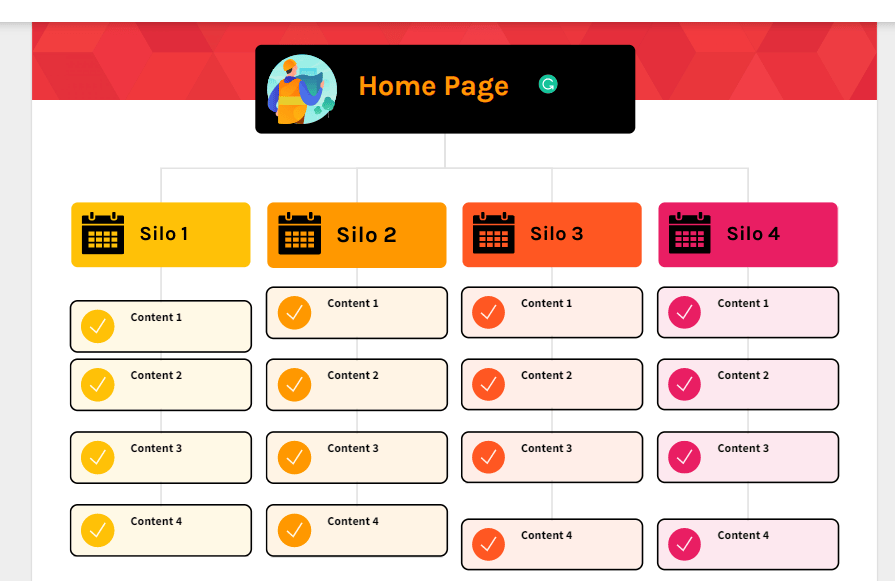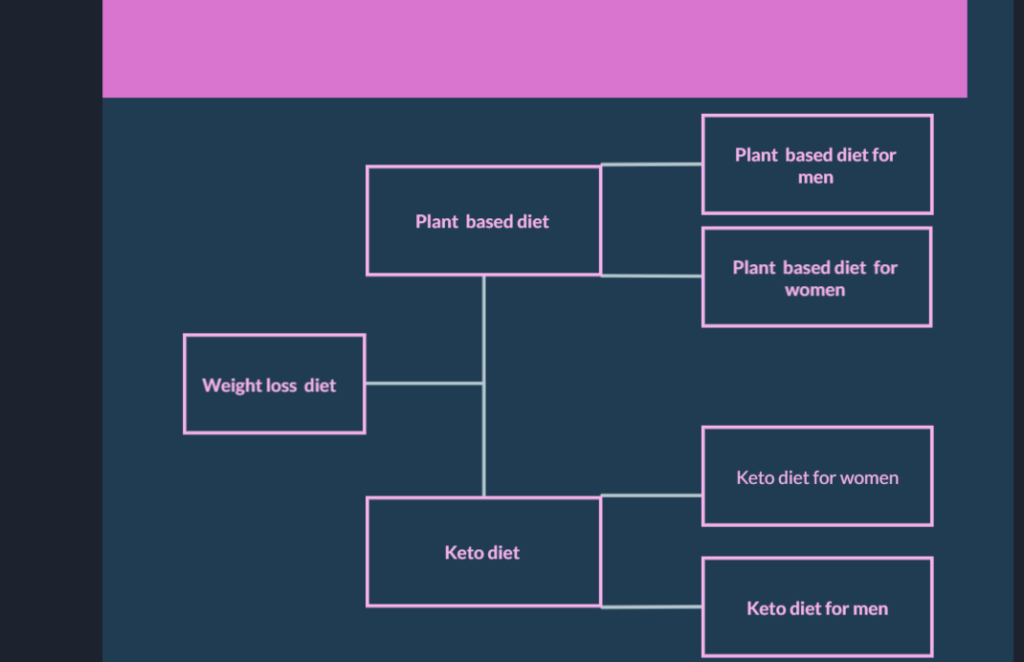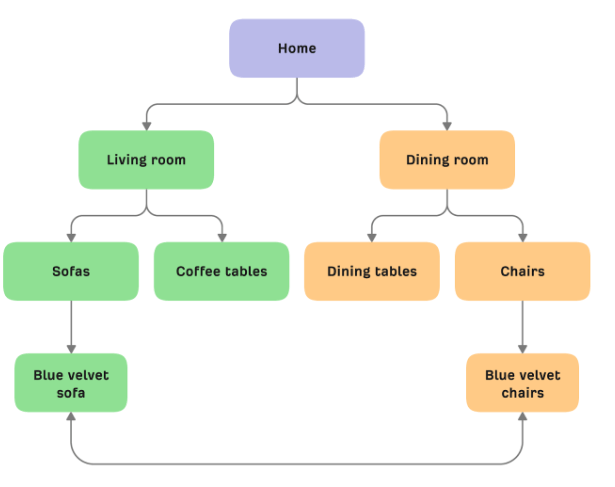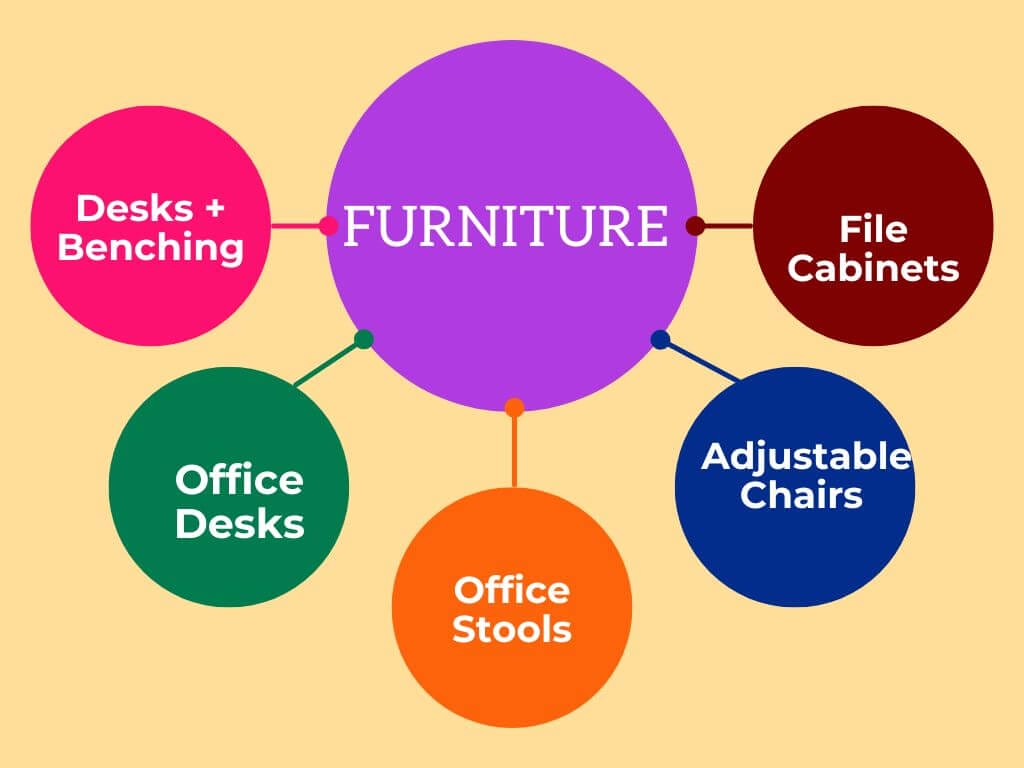You must have heard that web crawlers find it difficult to crawl webpages that are not appropriately interlinked on a site. And you must have also heard or known that the site structure helps link juice flow from one page to another.
Moreover, you may be aware of the information that if your site structure is well thought out and implemented well, you will get the following benefits:
- Your site will crawl more easily.
- The site structure will be simple to understand for Google bots.
- Link juice will easily flow from one page to another.
- The site’s navigation will be simple to navigate and understand for visitors.
- You can plan your content strategy and keyword planning more efficiently.
- Last, you can expect your site structure to improve your site’s SEO ranking and increase traffic positively.
However, it doesn’t happen like this. Most site structures are unoptimized and poorly constructed, which leads to poor crawling, a lower ranking, and a poor user experience.
So one of the questions you are likely to get in your mind could be, “How do you structure your site, and which site structure is the best for SEO that works for most?” And the answer to this confusion is “silo structure.”
It has been widely regarded as the most useful website structure that leads to excellent SEO results. So, this post is about this particular site’s structure, its implementation, and so on. Let’s begin!
What is a Silo Site Structure?
It is a website structure in which you create pages on specific topics that serve as a parent structure. Then, related pages to the parent structure are further created according to keywords or topic importance.
On the top of the page, the Home page resides. Each parent page is a “silo.” For example:
Now you may have a question cropping up in your mind: “How does a silo structure differ from a typical site structure, such as a flat structure?”
The answer is in categories of individual content types. In a flat-structured website, every page gets linked to the homepage, so every page is just a click away from it.
In the Silo structure, however, each page is linked to the parent “Silo” page, and subpages are created under them. However, a specific parent category page doesn’t get a link to the other parent category; in other words, pages under one silo do not get linked to the other silo’s pages.
Even though it is not the best model, the pyramid-shaped model is preferable, and we will discuss it in this post.
Now, you’re probably thinking about the advantages of connecting your site to a structure with several parent categories. Well, there are many.
What Makes SEO Silo Site Structure Excellent for Your Website?
There are many benefits to opting for a structure such as
1. Excellent for Interlinking
Going with the structure of a website created with silos is excellent for internal linking. Since you create content that links to a parent category, you have less chance of becoming confused. You can link the new page to the parent category page or other content pages belonging to the same parent category.
2. Helpful for Crawlers
Crawlers can quickly find new pages and understand their context. This leads to hassle-free crawling, and your pages have a higher chance of getting indexed quickly in the search engine database.
3. Enhance Your Authority Over a Topic
Because you’ve already decided which pages will be in your parent category and you only create content about those topics, your authority over those topics grows over time.
Moreover, you have more control over your content planning and optimization, so it doesn’t become an uncontrollable spread.
4. Better Planning with Keywords
Like content planning, your keyword strategy and monitoring become uncomplicated. You can keep tabs on what keywords are ranking more efficiently and analyze keywords according to a parent category and how pages perform for related keywords.
Furthermore, because you will be interlinking content to related topics, you can make your internal linking more contextual. Therefore, Google bots will see no unnatural links on the pages.
5. SERPs Ranking Boost
This is perhaps the most significant benefit of going with a silo structure: your site pages are better optimized to achieve a higher ranking. But how?
This happens because of the combination of all the other advantages:
Better interlinking
Greater authority over the content
More focused and widespread content creation
Better keyword use
Once you connect the related pages to each otter, it becomes easier for Google to understand them.
Furthermore, since you keep your efforts focused on the related pages, your authority increases, and your site’s web pages’ “page rank” score also increases.
“Page rank” ({PR) is a factor that depends on the quantity and quality of the internal and external links present on a web page.
In addition to other elements like content quality, page speed, user experience, and mobile user-friendliness, Google views page rank as one of the most crucial ranking factors. And by adopting the siloing method for the site structure, you take a step toward achieving a better score for PR.
6. Better Experience for Visitors
Opting for such a site structure improves navigation, and visitors are bound to stay longer on the site page. Otherwise, if the visitors don’t find the site quickly, they will leave it quickly.
So such website structure helps with decreasing the bounce rate, increasing the time visitors spend on the web page, and, most importantly, increasing engagement, which helps with conversions. Furthermore, your website appears more professional in front of your target audience.
Things to Consider Before you Even Begin with SEO Silo
It can seem super easy to create the structure of a website using siloing. However, you still need to keep many factors and good practices in mind while constructing it:
1. Keep the User in The Center of Your Site Structure
Consider your end users before you begin building the structure.
Google recommends that user experience be the axis around which every SEO activity needs to be undertaken.
And the site structure is no exception in this regard. Before you even start constructing the parent categories, think about the following:
- What is your target audience, and how does your site intend to benefit them?
- What current trends are popular related to the products, services, and solutions you will offer?
- The language, demographical, and location elements related to your target audience.
- How can you make the structure more user-friendly by analyzing how many parent categories are right? Having too many or too few categories is not ideal for the site.
- Ensure that your site performs well in other aspects like page speed, page experience, mobile experience etc.
2. Decide About the Parent Categories
This is the first step you must undertake to create an effective structure. Again, the users come into the picture here. You can analyze what topics are trending, what your end user likes, and what content your competitors generate.
For instance, consider an example of a digital marketing company. The following topics can work as silos:
- SEO
- Website Development/ Designing
- Social media marketing
- Paid marketing,
However, the structure can be like this too:
- SEO
- Ad marketing
- PPC
- Facebook and Instagram marketing
- Graphics creation
The slight difference occurs in both parent categories for these reasons:
- Offered solutions
- The demand for particular solutions
- Trend related to target user preferences.
So, think about improving your website by creating an effective silo structure.
3. Pick Your Sub-Categories After the Analysis
Once you are sure that you have picked the right parent categories, it is time to choose the appropriate sub-categories under them.
Here, again, you need to identify the significant keywords and topics that are in demand, receive high traffic volumes, and are appropriate from your business point of view. You can use SEO tools and carry out competitor analysis.
For example, Weight loss diet is the main category, and you can subdivide this category into
- Plant-based diet
- Keto diet
4. Divide The Sub-Categories into Long-Tail Keyword-Based Articles
This is where you can push the paddle down for your content strategy and get the most out of it as you further create sub-categories based on long-tail keywords.
It will assist you in achieving maximum conversions, and you can target the selected parent category with more impact.
For example, you can further subdivide the two chosen sub-categories (plant-based diet and keto diet):
Plant-based diet:
- Plant-based diet for men
- Plant-based diet for women
Keto diet
- Keto diet men
- Keto diet women
How to Implement a Silo Site Structure Effectively for the Maximum SEO Results
Building the structure by opting for the siloing method is not hard if you understand the chronological order and how link juice flows.
The main focus should be on creating a structure where link juice can flow from top to bottom and side to side if needed.
To achieve this, connect the parent category with the sub-categories and pages under the sub-categories. The bottom pages can be linked to the parent pages (not with the home page), and the top-performing pages within a silo can be linked to other silo pages that are contextually similar by building a pyramid-shaped structure. In such a structure, you can connect the parent web pages with the home page.
But what exactly is a pyramidal structure? Let’s discuss it!
What Exactly is a Pyramidic Structure, and How Does it Differ From Siloing?
The pyramid structure is where you create sub-categories under a category and more categories if needed, which Google has recommended.
In a typical structure created by using the siloing method, link juice flows from top to bottom without creating sub-categories:
Because the link juice only flows from top to bottom for one category, this structure is limited. However, you want them to have a pyramid structure, as shown in the below image:
What are the Best Practices to Get the Most Out of Your SEO Silo Strategy
Such a website structure is better for SEO because it helps connect contextual pages and allows link juice to flow from one silo to another if necessary. As you can see in the diagram above, the “blue velvet sofa” is connected to the “blue velvet chairs.” This leads to better structuring of your whole website.
Now, let‘s move on to the best practices for construction and implementing siloing on your site.
To get the most out of your structure based on silos, you can follow the below steps:
1. Create a Content Hub
By focusing on creating multiple categories around a parent or sub-category in your site structure, you can create various types of content that revolve around the same topic. For example,
Parent Category: Self-defense training
Sub-category
Karate classes
Taekwondo classes
Content cluster pages under subcategories:
Karate Classes
Karate classes for women for personal defense
Karate classes for men for personal defense
Taekwondo Classes
Taekwondo classes for men for personal defense
Taekwondo classes for personal defense
2. Use a Pyramidal Structure
This is one of the important tips that has been discussed already. By using a pyramid structure, you can create a top-down model consisting of parent silos and sub-category pages.
Moreover, you can focus on creating a content hub around sub-categories under the respective silos to increase your site’s authority. You can link pages from top to bottom and from silo to silo as long as they are contextually linked.
3. Don’t Create Important Pages too Down or Deep
Your website’s pages should be placed closer to the parent and sub-categories. If they are too far down or deep, the link juice from the parent silo will not easily reach the deep pages.
You get the most out of this strategy by keeping the important pages closer to the parent silo and best-performing sub-category pages.
4. Link Pages Under Different Silos if They Are Contextual
Even this point has already been discussed. Instead of adopting a rigid approach and not linking content pages under different silos, you can link them if you find they are contextually the same, and link juice flow seems natural.
5. Use the content gap tool to create better content clusters
Knowing what your competitors are doing allows you to seize the opportunity to build better structures with better content clusters. You can use the Ahrefs content gap tool to know where your content strategy is lacking. Using content gap analysis, you can also find the different content creation opportunities according to your target audience’s buying journeys at each step.
Wrapping Up
Site structure is an important aspect of your website’s search engine optimization. It is one of the foundational elements on which your campaign rests.
This post sheds light on how link juice flows within any website, and creating an efficient structure is critical to ensuring your site is easy for search engine crawlers to crawl. And one of the most used and recommendable models for structuring your site is the “silo site structure.”
Not only is this model great for content strategy and better for Google bots, but it is also better for the contextual link juice flow among multiple site pages.
Moreover, the posts explain how link juice flow is one of the ranking factors; if it is efficient, your content pages have a higher chance of achieving rankings. Furthermore, you can expect that the engagement metrics of site visitors will also improve.
Additionally, this post also discusses how to create a “pyramid structure” consisting of silos (parent pages) under which sub-categories and content cluster pages exist.
And how to link juice flows within an individual silo and from one silo to another if the pages are contextually linked.
It is an ideal model and better than the rigid silo, where sub-categories consisting of content clusters do not exist, and link juice flows top to bottom, not side to side, among different silos.
Frequently Asked Questions (FAQs)
Can you explain “silo structure” in simple words?
It is such a structure that your content pages are divided into multiple parent categories (silos) under the home page. The parent categories are subdivided into further sub-categories to target topics and keywords.
The parent and sub-categories pages can be web content pages, blogs, landing pages, or anything containing written or visual content. Sub-categories under the parent page are typically linked to each other or the parent category (Silo) rather than the home page, as is the case with a flat structure.
What are the benefits of Siloing?
Here are the 6 benefits of creating a website structure by adopting the siloing method :
- Your site faces fewer issues in crawling,
- It becomes in terms of navigation and user experience.
- Bots can understand the contexts of the pages easily; therefore, the rankings of those pages have a higher chance of going up.
- Link juice flows naturally and contextually within site.
- This leads to better content strategy creation and deployment
- You can plan your keywords strategy better.
How do you use a structure created by the silo method to improve your keyword strategy?
When you opt for siloing, one of the ideas is to target specific keywords. And you do it by picking parent topics and sub-topics related to them. Further, you break down those topics into more categories to create content clusters to target medium- to long-tail keywords, and these steps help your keyword strategy.
For each category, you create content pieces to target the particular keywords. In sub-categories. you have the chance to use long-tail keywords.
What is a pyramid site structure, and how is it different from the rigid solo structure?
The pyramidal site structure is one type of silo only. However, it is different in terms of link flow and content cluster creation. Under the rigid structure of a website based on the silo method, you will find link juice flowing within a parent category or a silo. However, in the pyramid structure, link flow can happen from one silo to another within a site if the pages are contextually related. In content creation, more sub-categories of pages are created to target a higher number of keywords.
How does silo structure boost SEO?
The 3 pillars of SEO are: authority, relevance, and experience, and by using a silo strategy, you can influence all 3. Such site structure improves the user experience, and content creation based on relevant topics and keywords increases your website’s authority.
Additionally, you develop many pages filled with quality content based on user needs and experiences, which keeps your site relevant and updated. All these factors lead to SEO results in terms of rankings, traffic, and conversions.











